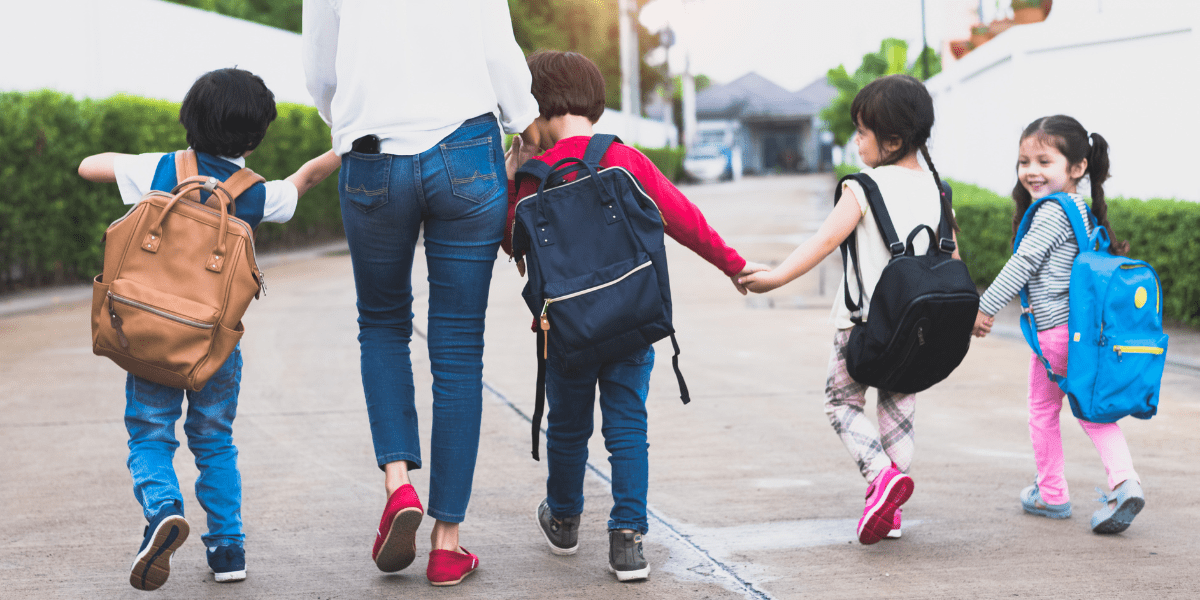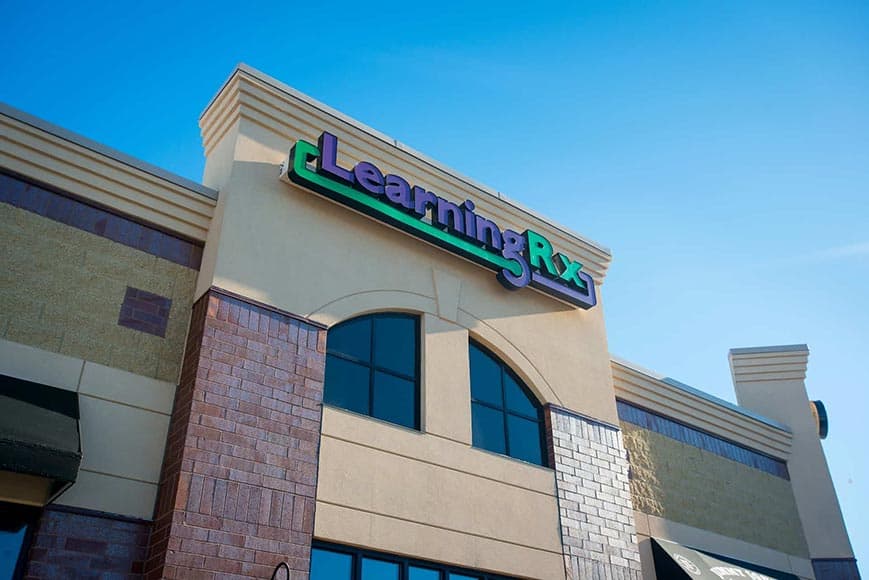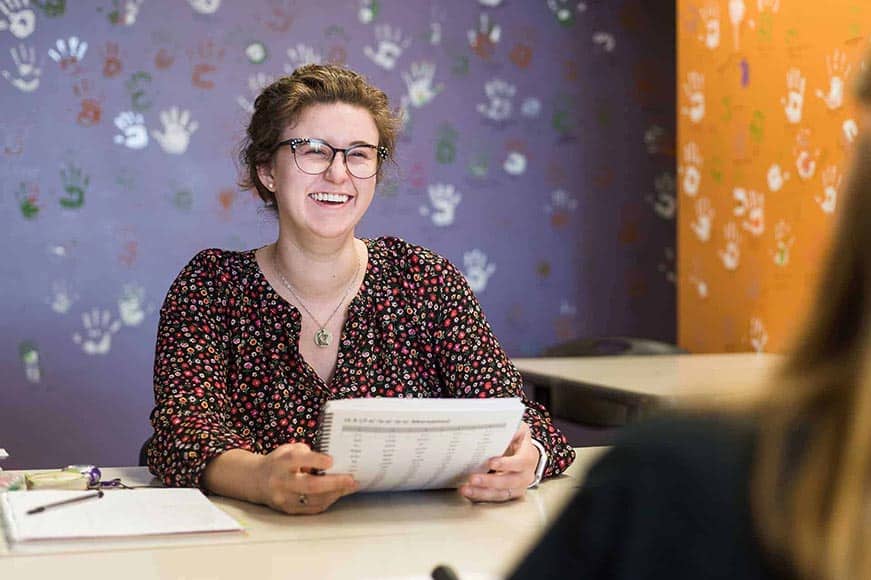A Practical Guide to Easing Your Child’s Back-to-School Anxiety
As summer comes to a close and the school year looms, it’s common for children to experience anxiety at the thought of starting school again.
Kids worry about new routines, schoolwork, and social interactions, such as whether their friends will be in their class, whether their teacher will be nice, or who they’ll sit with at lunch. Think back to when you were a kid starting school—do you remember having those feelings? Most (if not all) of us have experienced that kind of anxiety.
Even so, it’s easy to feel helpless when your kids are anxious. Luckily, there are some simple, yet powerful, ways you can support your child and ease their back-to-school anxiety. Here are just a few.
1. Create a Daily Schedule Your Child Can Count On
Uncertainty is one of the biggest reasons kids experience back-to-school anxiety. Much of that anxiety stems from being nervous about new routines.
Children thrive when they know what to expect.
That’s why it’s so important to maintain a consistent daily schedule at home. Creating a school-year schedule gives your child daily structure they can count on. Before the school year starts, write up a schedule and post it on the fridge or another central spot in your home.
Here’s an example of a school day schedule to get you started:
6:00 a.m. Wake up
6:30 a.m. Have breakfast
6:45 a.m. Get dressed and brush teeth and hair
7:15 a.m. Double-check backpack; add lunch, snack, and water bottle
7:25 a.m. Leave for school
7:45-2:15 School
2:45 p.m. Get off the bus
3:00 p.m. Wash hands, eat a snack, unload backpack
3:30 p.m. Play or rest
4:30 p.m. Start homework
5:30 p.m. Eat Dinner
6:30 p.m. Finish homework or do something active
7:30 p.m. Shower, pack tomorrow’s lunch, load backpack
8:30 p.m. Bedtime
Start incorporating parts of this routine—such as meal times, wake up time, and bedtime—a week or two before school starts to help your child get through the transition to the school year.
2. Empower Your Child by Allowing Them To Make Choices
Putting a few decisions in your child’s hands will help give them a greater sense of agency.
For example, let them pick out healthy breakfast foods at the grocery store. One day a week (Friday Fun Day or Monday Mmmms, perhaps), allow them to choose a special treat for breakfast: their favorite sugary cereal, donuts, cinnamon rolls, and so on.
Give them some freedom to choose what they’ll have in their lunchbox as well. For instance, let them pick out a few sandwich fixings, a couple of fruits and veggies they like, some kind of cheese or nuts, and a special treat. If they’re old enough, have them pack their lunch each night before bed. It will give them one more way to have a sense of control over what’s happening.
3. Teach Your Child Relaxation Techniques
Another way to help ease your child’s back-to-school anxiety is by teaching them relaxation techniques they can tap into when they need it.
When we’re anxious, our breathing becomes shallow, our heart rate picks up, and our body moves into fight-or-flight mode. However, our body also has a built-in relaxation response, and you can teach your child how to flip the switch to override anxious feelings.
- Belly breathing: Have your child put their hands on their belly and take slow, deep breaths in through their nose, filling up their belly. Then have them exhale slowly through their mouth, letting their belly fall. There are great videos available online that can help your child grasp this concept. Here are a few of our favorites: Candle and Flower Breathing, Belly Breathe with Elmo, and Taking Deep Breaths (for older kids).
- Essential oils: Nature provides us with calming plant and herb essences that we can diffuse or apply topically to promote relaxation. Get your child an essential oil room diffuser to use at home or a rollerball with a calming essential oil (lavender, vetiver, frankincense, or bergamot, for instance) that they can rub on their wrists or neck when they start to feel anxiety creeping in.
- “54321”: Help your child focus on the present moment by noticing: 5 things they can see, 4 things they can feel or touch, 3 things they can hear, 2 things they can smell, and 1 thing they can taste. Learning to reroute their thoughts to notice the things around them will help stop anxiety in its tracks.
- Affirmations: Teach your child phrases they can use to calm themselves down when they feel anxious. Repeating phrases to themselves like “I am calm,” “I am safe,” or “I am capable” can help them see an anxiety-inducing situation through a new lens. Even better, work with your child to choose phrases specific to them that help them feel calm.
4. Stay Positive, but Hold Space for All Your Child’s Emotions
Your child will feed off of your emotions—the good, the bad, and the ugly. Do your best to stay positive. Be optimistic. Encourage your child, give them perspective, and empower them with positive thoughts.
But it’s also important to allow your child to feel their feelings.
Whether or not you think your child’s feelings make sense, they are real. Never punish your child for feeling anxious. In children, the fight or flight response can often look like acting out or melting down, and punishing them for that is not an effective way to address their feelings. In reality, it will only increase their frustration and anxiety.
Instead, allow them to talk about how they’re feeling, and listen. Ask clarifying questions like:
- How does your tummy feel when you think about school?
- What makes you nervous about getting on the bus? Or walking into the lunch room?
- What negative thoughts do you have when you’re sitting in class?
When your child feels safe to talk about their fears, it helps dispel those fears and give them a sense of power over them.
5. One of the Best Ways To Ease Your Child’s Back-to-School Anxiety? Get Moving!
One of the best ways for kids and adults alike to de-stress and cope with anxiety is through exercise. When we exercise, our brains release endorphins, or “happy hormones” and reduce stress hormones like cortisol and adrenaline.
Here are a few ideas to get your child moving:
- Play organized sports
- Take a yoga class
- Family bike rides
- Dance parties
- Play tag or other outdoor games
- Walk the dog
- Jump rope or play hopscotch
- Toss the ball or throw the frisbee around the yard
- Hike on a local trail
There are so many ways to move, and kids need a variety of movement every day.
Aerobic exercise helps build self-confidence and is an important part of both physical and mental health. Exercise that builds strength is also important, like climbing or swinging on the monkey bars. And be sure to incorporate stretching and belly-breathing techniques for a well-rounded experience.
For kids ages 6 and up, aim for at least 60 minutes a day of physical activity. That 60 minutes can be all at once or broken up throughout the day. Staying active helps kids combat anxiety and focus on school, homework, or chores.
6. Model These Techniques for Your Child
The best way to help your child incorporate these techniques is by modeling them yourself. If they see you managing your own stress through exercise, breathing, or sticking to a regular schedule, they’ll be more likely to want to try those things themselves.
Many of these activities are ones you can do together. Plan weekly family bike rides or hikes, do yoga or breathing exercises together, make space to talk about emotions, and so on. Incorporating these things into family life will help your child realize that both anxiety and learning to manage anxiety are normal.
If your child is showing signs of back-to-school anxiety, use some or all of these ideas to comfort and empower them. If their anxiety doesn’t diminish or you suspect weak cognitive skills are part of the problem, take our free brain quiz or reach out to us here to learn how brain training with LearningRX can help!







